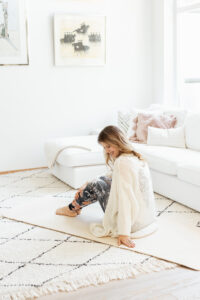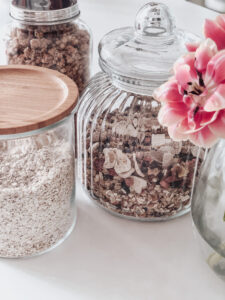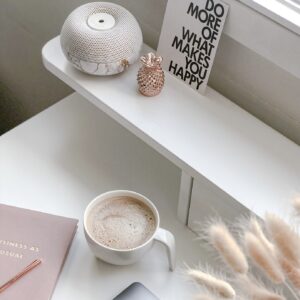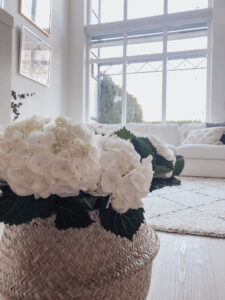Have you ever noticed how much your environment actually impacts you?
Remember that inexplicably strange feeling when you walk into a room and simply want to turn around and leave? Or spending time in your favourite coffee shop that smells so divine and has the most comfortable lounge that you have a hard time leaving?
The truth is every environment has a significant impact on our health. In our modern world, however, many environments cause us stress, lack of focus, and illness due to being mismatched with how our brain functions.
Brain research and our environment
What does brain research have to do with the environment we live and work in? A lot, actually. According to WHO, mental health conditions are increasing rapidly worldwide. Designing and creating interiors, architecture, and environments that activate the brain’s natural healing mechanisms to enhance health, sustainability, and quality of life is crucial.
Neurodesigner and author Isabelle Sjovall has studied this fascinating connection between our brains and environments and emphasises in her recent book “Designfulness” that design is a constant presence in our lives. To make the most of it, we need to actively shape our environments rather than simply being passive recipients of them.
Designfulness can be used when choosing materials, furniture, colours, lighting etc., to enhance our well-being.
What can you do to actively change your environment?
On a larger scale, you can’t obviously impact the architecture and design of your city, schools, offices and other public environments unless you want to get active in your local community and politics. But you can start small and transform your home and potentially your workspace, at least on the inside.
As you might have already guessed, the first step is to declutter. Most people have too much stuff, and no wonder it feels stuffy and stressful at home (or at work!) when piles of things need attention.
Here’s my top-10 list to start your journey to more lightness and being in control of your environment:
- 1. Start small and tackle one tiny area or category at a time
- 2. Spend max 15-20 mins/day on your mini project. Otherwise, you won’t finish
- 3. Make sure you focus on keeping only what brings you joy and is useful
- 4. Get rid of items that you haven’t used in the last year
- 5. Donate or sell items in good condition that you no longer need or want
- 6. Group similar items together and store them in a way that is logical and makes sense to you and your family
- 7. If you need to buy something new (other than necessities), think twice before clicking “buy” or simply sleep on it first
- 8. ‘One in – one out’ principle. Make space for the new item by getting rid of something you no longer use and need
- 9. Add two bins to your recycling area for 1. donations and 2. items to sell. Take action when they’re full.
- 10. Maintain the decluttered state by regularly editing, organising and letting go of excess items.
How does a tidy space affect us?
If you’ve ever tried reducing and re-organising your home or workspace, you will know how wonderful that feels. You may feel lighter, unburdened, more in control, focused and energised. Until it’s untidy again…
An organised space can positively impact one’s mood in several ways:
- 1.Reduced stress and anxiety: An organised space can reduce feelings of stress and anxiety by reducing clutter and making it easier to find what you need
- 2. Improved focus and productivity: A tidy environment can help you focus on the task at hand and increase your productivity
- 3. Boosted mood and confidence: Being surrounded by an organised space can lead to a boost in mood and confidence
- 4. Increased relaxation: A decluttered space can create a sense of calm and relaxation, which can positively impact your mental well-being
- 5. Better sleep: An organised and tidy bedroom can promote better sleep, leading to a more refreshed and energetic mood
Overall, having an organised space can help create a positive and calm environment, leading to improved mood, well-being and relationships.
Does your space need to be visually beautiful too?
There is no right or wrong answer to this question. Beauty is in the viewer’s eyes and means different things to each and every one of us.
In my experience working with many clients, I always make an effort to make the space visually attractive so that the end result is significantly different from the starting point. It is an absolute game-changer, in my opinion. Usually, I beautify a space simply by using what the client already owns, just placing and decorating things differently, and giving the items more space to breathe.
Additionally, think about what increases your feelings of cosiness in your home. Is it having plants, flowers, a fireplace, candles, and many pillows and throws? Is it board games with your loved ones, good food, reading books, listening to music, watching TV, gardening or drinking a cuppa?
Make a list to see what makes you tick, and make an effort to add some of your favourites to your home for regular self-care.
Much love and happy simplifying,
Helena







